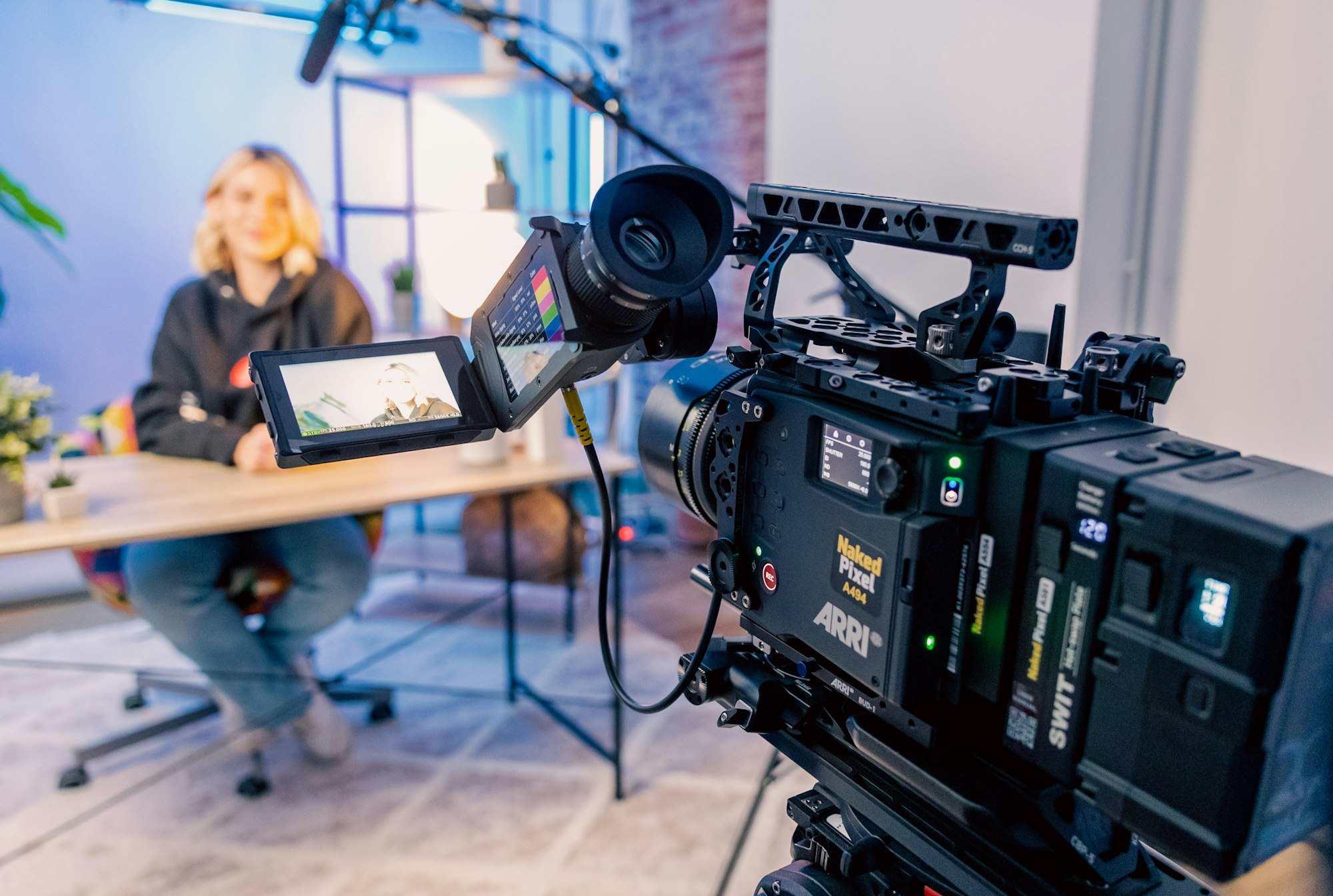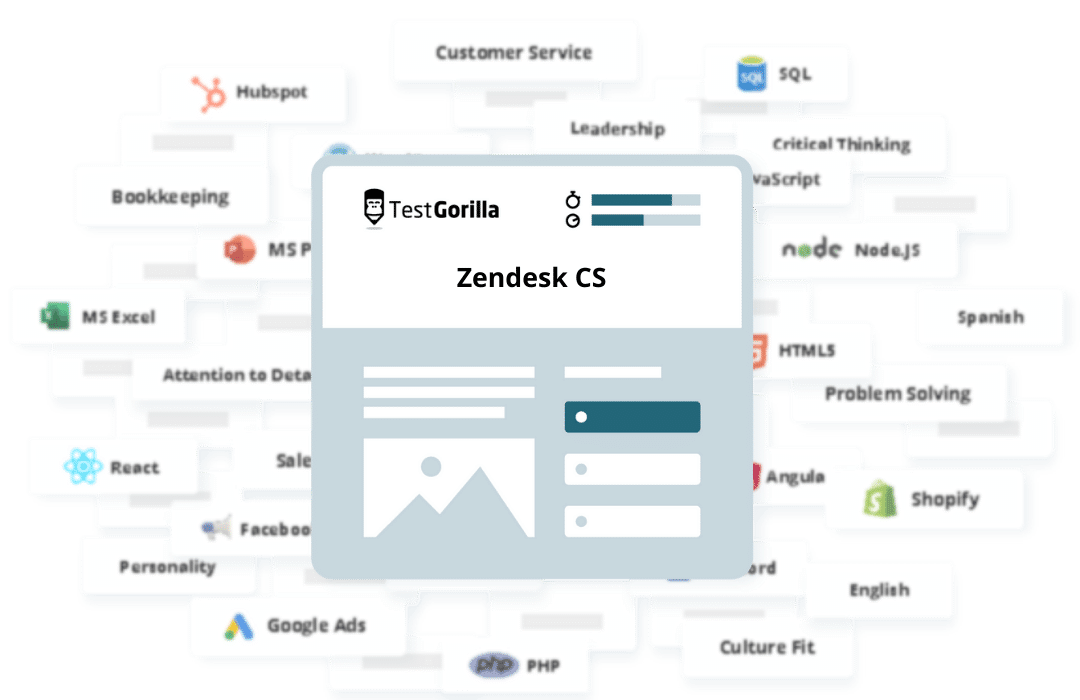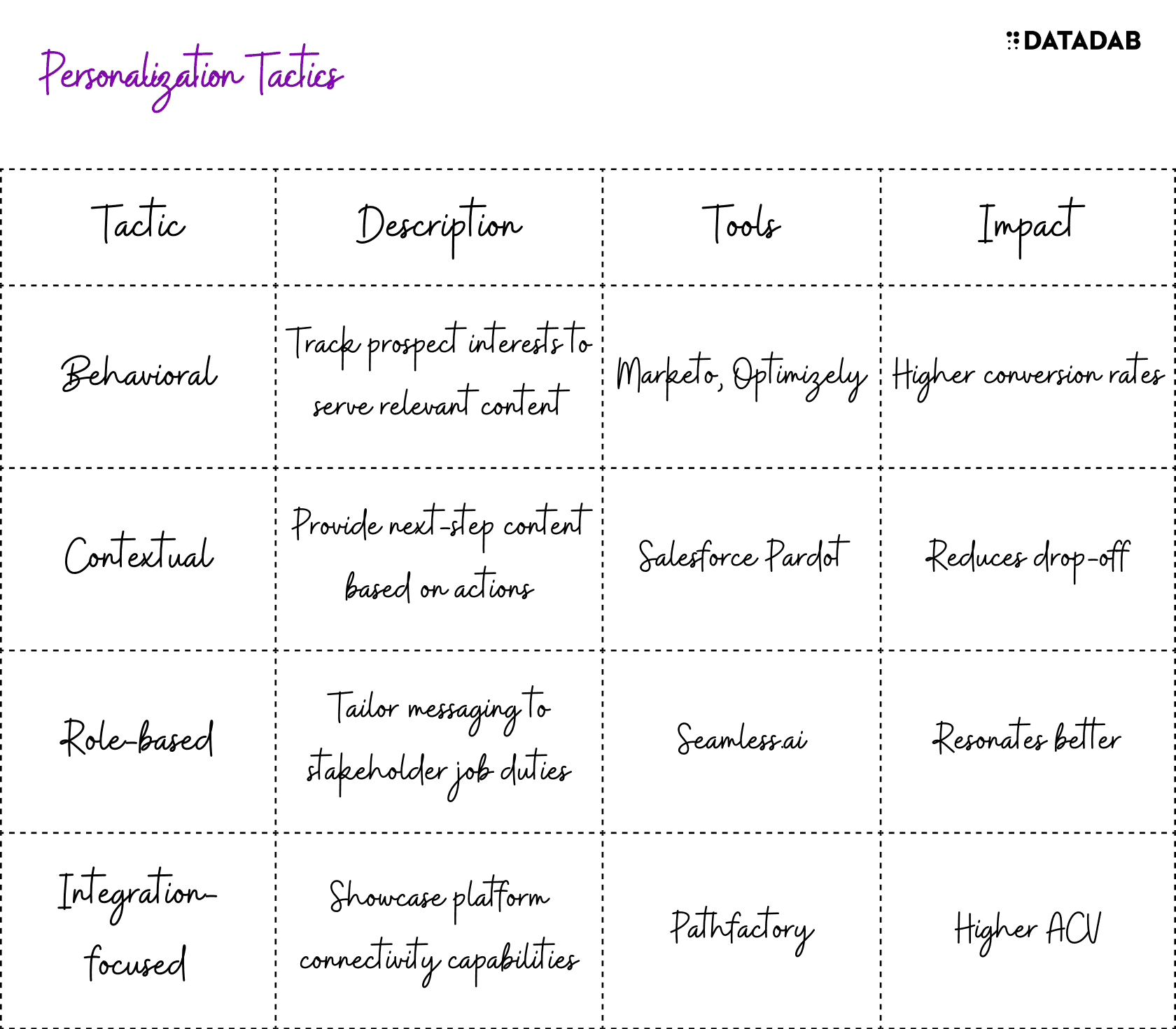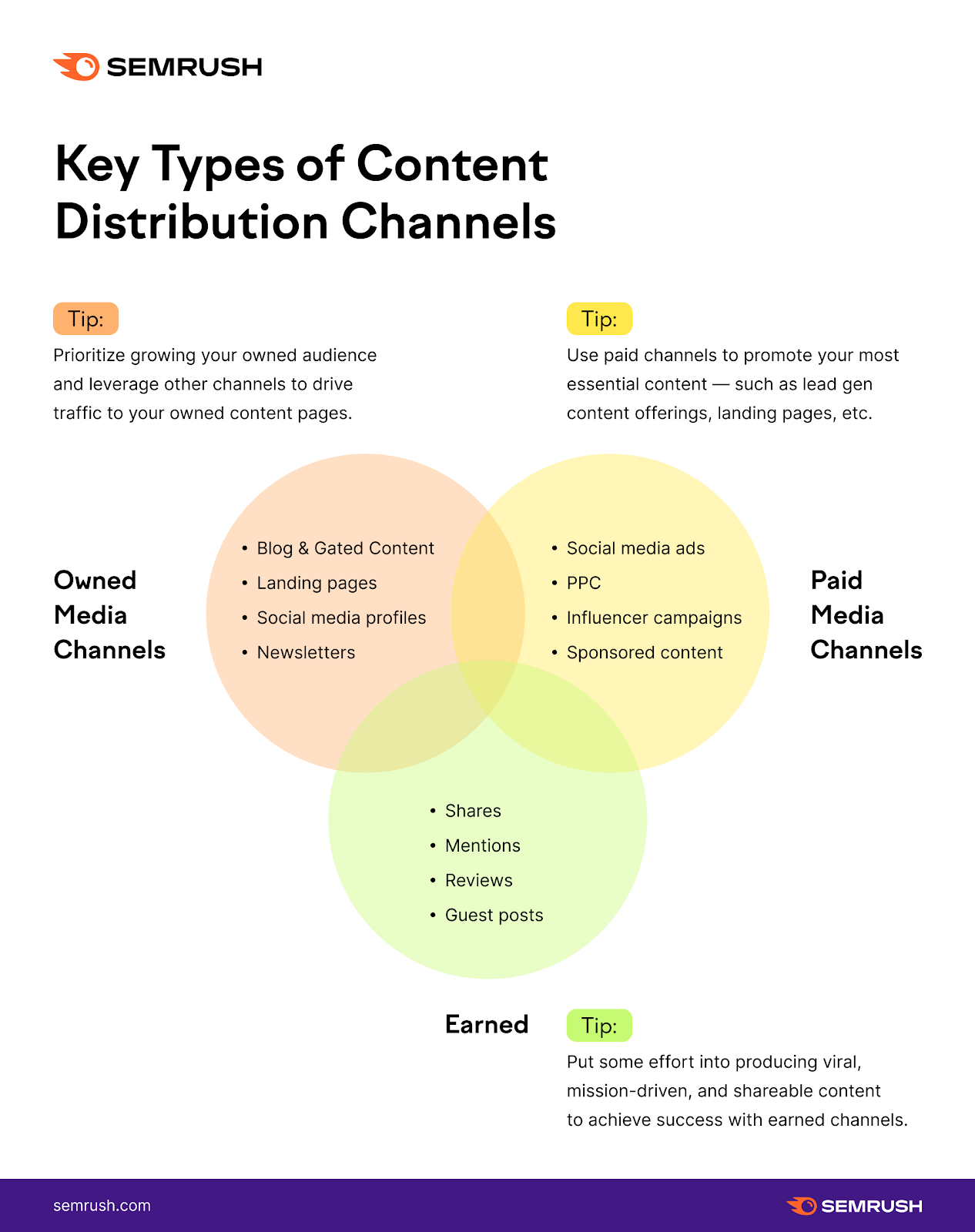"SaaS buyers demand content as personalized as their Netflix recommendations yet as practical as their accounting bottom lines."
Standing out isn’t easy when your SaaS startup battles for attention against VC-backed competitors 100x your size. But David can absolutely take down Goliath with the right content slingshot.
After empowering 50+ SaaS companies through rapid growth phases, we’ve seen scrappy marketers topple titans time and again. They win by breaking the status quo content mold across 4 key dimensions:
🚀 Creating Interactive Tools, Not Just Blogs
🎨 Injecting Humor and Personality Into Visual Content
🤝 Building Personalized Experiences for Each Prospect
🔊 Amplifying Through Diverse Channels Beyond SEO
In this post, we’ll explore innovative formats, examples, and strategies for your SaaS content. You’ll discover how to guide buyers on a remarkable journey beyond the bland norm.
Join us as we unpack everything from assessments to explainers videos, meme marketing to immersive calculators, and community conversations to value-driven tools. Take a walk through our SaaS content framework battle-tested to turn strangers into brand evangelists and window shoppers into loyal customers.
Let’s get started!

Breaking Down the Basics: What Makes SaaS Content Different
SaaS content faces distinct challenges compared to traditional software:
The solutions are technical yet benefits-focused. SaaS platforms offer complex capabilities through advanced technology. Yet purchasers often care more about business outcomes. Content must bridge the gap between technical details and real-world impact.
Buying cycles are long with multiple stakeholders. SaaS purchases involve extensive research and consensus among decision-makers. Content must nurture prospects across an elongated funnel while appealing to diverse buying committee members.
Competition is fierce. The SaaS market is saturated across niches like CRM, collaboration tools, and marketing automation. Brands constantly battle for a share of voice. Content is critical for differentiation.
With such unique demands, SaaS marketers can't solely rely on traditional best practices. Innovative content strategies are required to thrive.
Case Studies: SaaS Brands Doing Content Right
Let's look into 2 brands breaking the SaaS content mold:
Zendesk
The customer service software company creates interactive content like quizzes and assessments. These fun formats educational prospects while collecting data for sales teams.
For example, Zendesk's Customer Service Quiz helps prospects evaluate their capabilities. It asks readers to "rate how strongly you agree with the following statements" across various best practices. After submitting their answers, users receive a personalized analysis of strengths, weaknesses, and recommendations.

The quiz educates prospects on Zendesk's expertise while providing data for sales follow-up. Interactive content gives readers value beyond a simple blog post.
Mailchimp
The email marketing platform is beloved for its amusing visual content. Mailchimp uses humor and creativity to produce viral marketing campaigns, engaging social posts, and quirky platform tutorials.

For instance, compelling visuals anchor its Smarter Inbox Summit content series. The collection of videos and posts educates email marketers through an entertaining virtual event. Mascot Freddie von Chimpenheimer III offers humorous hosting while faux thought leaders like Dr. A.I. Ibideeu present keynote sessions.
Mailchimp's uniqueness and personality shine through across its content. The brand stays true to itself rather than conforming to stiff B2B tropes.
These examples demonstrate that creative formats, engaging visuals, and strategic utility attract attention in the crowded SaaS space.
Lessons from the Front Lines of SaaS Content Marketing

Beyond case studies, analysis of high-performing content uncovers vital learnings:
Leverage visuals - Compelling graphics and video better convey complex services. UI animations and customer testimonials are incredibly impactful.
Speak to business outcomes - Avoid over-techy jargon. Connect capabilities to real-world results. ROI studies and analyst research build credibility.
Promote with utility - Valuable tools and resources entice organic sharing on social channels and professional communities like Reddit and Inbound.org.
Personalized experiences - Customized content resonates deeper than one-size-fits-all. Build in segmentation and tailored recommendations.
Interactivity over passivity - Engaging assessments, calculators, and generators outperform static list posts with higher conversions and sharing.
Entertain and inspire - While many B2B brands aim for serious sophistication, fun and creativity can better capture attention amid endless competition.
Let's explore the powers of visual storytelling, personalization, and multimedia content for SaaS.
The Role of Visuals and Multimedia in SaaS Content

Text-centric blogs have limited appeal for technical products. Instead, SaaS content should incorporate:
Compelling graphics and data visualizations that demonstrate capabilities and convey the scale of impact.
Explanatory videos like demo overviews, customer testimonials, and behind-the-scenes company culture videos.
Interactive content such as assessments, calculators, quizzes, and online tools.
Podcasts and virtual events that discuss industry trends and best practices.
Visual assets unlock new dimensions for storytelling and engagement. Infographics and videos give life to formerly dry topics while building brand personality. Interactive tools deliver value beyond promotional blogging. Podcasts and events nurture communities around shared interests.
Yet simply plugging in a video or hosting a webinar isn't enough. The power lies in crafting authentic, multimedia experiences. Connect disparate formats into a cohesive narrative journey.
For example, an eBook could combine data charts, customer success stories, explanatory video demos, and links to assessments or tools. Together, these elements guide readers through an informative, enriching self-education.
Diversifying beyond the company blog unlocks new opportunities to attract, engage, and delight audiences.

The Power of Personalization: Making Your Content Speak to Each Reader
Generic, one-size-fits-all content doesn't cut it for SaaS buyers on a complex journey across channels. SaaS providers must serve users with relevant, personalized experiences tailored to individual needs.

Behavioral personalization tracks prospect interactions to deliver pertinent content. For example, if a retail manager engages with retail tech overview posts, serve recommendations for inventory management solution comparisons.
Contextual personalization matches content to buyer stages based on explicit signals like form fills. After downloading an ROI template, guide users to related calculators and comparisons for numeric business case building.
Role-based personalization tailors messaging and formats to different stakeholders like executives, IT managers, and end-users. CIO playbooks warrant more technical detail than self-serve buying guides for frontline employees.
Integration personalization showcases how your software connects with specific third-party apps relevant to each visitor based on their stack. Illustrate workflows with the platforms and plugins they already use.
With personalization engines like Evergage and Persado, SaaS brands can now scale one-to-one experiences across millions of prospects—no more mass-blasting broad-content plays. The future lies in tailored relevance powered by customer data intelligence.

Advanced Tips for Distributing and Promoting SaaS Content
Producing engaging, valuable content means little without distribution and promotion. Too often, teams pour resources into content that fizzles out unseen.
Avoid this fate with an omnichannel distribution strategy spanning:
Social promotion - Share content across company social accounts, employees' networks, and paid social campaigns. Include video clips or images to make previews pop.
Influencer amplification – Send new releases to industry analysts at Gartner and Forrester, as well as micro-influencer thought leaders. Quote their reports in your content for added credibility.
Organic optimization – Ensure on-site content meets SEO best practices like keyword integration, metadata, and internal linking. Pursue backlinks from syndication on partner websites and guest contributor posts.
Paid distribution – Promote high-impact content through paid ads on platforms like Facebook, Twitter, Quora, and LinkedIn to expand reach beyond organic channels.
Real-time recommendations – Identify related content for web visitors using pop-ups and website overlays powered by analytics.
Email nurturing – Share helpful resources through lifecycle emails tailored to prospect needs on their journey. Send new subscriber welcome series, shopping cart abandonment flows, and role-based education tracks.
Reviews and social proof - Sprinkling validation from customer testimonials and credible publications boosts credibility. Promote genuine reviews on trusted review sites like G2, Capterra, and TrustRadius.
Distributing content across channels and touchpoints ensures more eyes see and engage your thought leadership. Cover all bases through organic search, social media, email, advertising, and trusted communities.
Conclusion: The Future of Content Marketing in the SaaS Industry
The SaaS content landscape is more competitive each day. Standing still means falling behind as players like Zendesk, Drift, and Mailchimp continue innovating.
However, SaaS brands can thrive by focusing on visual storytelling, utility over vanity, personalization, and omnichannel delivery. Think beyond the company blog to diversified content experiences blending creativity, interactivity, and multimedia formats. Meet prospects where they are, whoever they are, with relevance.
While historically, B2B marketers clung to overly formal tropes, the future calls for fearless differentiation. Brands embracing distinct personalities and unconventional angles own the conversation. Help buyers with valuable resources instead of endless product pitches.
Compelling content is your competitive edge as the digital shelf grows more crowded by the minute. Break the status quo mold and unlock new dimensions of connection with customers. Claim your ground as a category leader with content that informs, entertains, and inspires.
FAQ
What types of content resonate best with SaaS buyers?
SaaS buyers respond best to content that clearly conveys the business value a solution delivers. This includes case studies quantifying ROI, analyst research reports, and total cost of ownership models. Interactive tools like ROI calculators also demonstrate tangible impacts. Avoid overly technical details on functionality and emphasize real-world outcomes for the reader's role instead.
How can my small SaaS startup compete on content against vendors 100X our size?
Budget limitations can seem daunting against Fortune 500 competitors. However, smaller brands can get creative and outmaneuver larger rivals. For example, illustrate specific use cases through comic strips or animations versus polished video. Podcasts and weekly newsletters are affordable formats to share helpful advice once you identify a key customer pain point to own. Partnerships with microinfluencers, freelancers and agencies can amplify original content across multiple channels despite limited internal resources.
What multimedia formats work well for SaaS content?
Interactive content like assessments, quizzes, calculators and online tools work incredibly effectively for SaaS - leading to higher conversion rates over stale blogs. Demo videos also hugely impact purchase decisions, allowing you to showcase complex workflows visually. Webinars position your team as thought leaders when marketed properly to drive registrations. Infographics and ebooks can work if aligned to buyer needs and promoted through paid and organic social channels. Creative is key - develop formats aligned to bottlenecks in your client journeys.
How do we make our blog stand out when topics seem exhausted?
Carving out a unique blogging niche seems impossible - but it isn't. Avoid played out best practices by putting your own twist and brand voice into evergreen fundamentals. For example, writing about AI trends has been done but discuss predictions focused specifically on your niche like retail tech AI applications. Expert interviews and guest contributor posts also lend outside perspectives. Take stances on controversial issues your competitors avoid to spark discussion. Align around interests not products - what podcasts, communities and hashtags does your audience gravitate towards outside of work and how do you provide value there?
Should our blog cover capabilities or business outcomes?
As tempting as diving into product specifications may seem, SaaS buyers care far more about real work impacts than speeds and feeds. Avoid siloed function-specific posts. Instead identify the biggest cross-departmental headache your solution alleviates. For HR software, discuss enhancing cross-team collaboration. Illustrate how better data accessibility unifies disjointed systems for retail analytics tools. Align content to C-level strategic priorities using credible research. Blog posts should inspire while demos and evaluations later prove out technical fit.
How much budget should SaaS firms allocate towards content generation?
Content marketing warrants significant ongoing investment for SaaS brands given long, complex sales cycles - often 15-35% of total marketing budgets. Established mid-market players may budget $100k+ annually including staffing dedicated content teams. Early stage startups can stretch limited resources through freelancing, interim hires and agencies. Many effectively ramp for $40-60k/year. Paid amplification of owned content and resulting sales qualified leads generated determine optimal spend levels. Test alternativebudget allocations across different formats and distribution channels and allocate towards highest ROI.
What tools can help us personalize content experiences?
Many personalization-focused platforms exist like Evergage, Persado, and Salesforce Marketing Cloud. These enterprise solutions allow teams to build out tailored site experiences but require six figure contracts. More affordable tools like Segment, Customer.io, and Dynamic Yield - $50-200/month range - suit early stage startups. Use existing ESP and MAP vendor capabilities first before adding complexity. Simple yet effective tactics like customized email nurture tracks, web push notifications prompting recent visitor content and basic lifecycle messaging cart flows should come before advanced customization.
How can we promote content across social channels effectively?
Too often brands simply blast posts out across scattered departmental accounts without momentum. Centralize efforts under one unified brand voice - don't dilute expertise across disconnected channels. Attract followers through employee takeovers versus corporate-speak. Partner with relevant microinfluencers to tap into engaged networks - compensate them in product credits or free access versus cash. Create shareworthy visual quote cards and video clips for broader non-text reach. Promote content in closed professional community groups on LinkedIn and Reddit versus cold outbound pitching alone. Leverage existing brand advocates sharing organically to drive credibility through user generated content and word-of-mouth.
What PR opportunities exist for amplifying SaaS content?
Beyond owned website and social media channels, SaaS brands should leverage PR to broadcast content through credible third-party outlets. Position executives on relevant panels at industry conferences, seminars and meetup events then repurpose discussions into blogs and videos later. Seek podcast guest contributor slots and magazine profile features targeting your niche. Release quarterly State of the Industry benchmark reports for coverage. Feature user case studies in sector publications your clients already read. Promote data-rich surveys that align to current event news hooks and seasonal interests. PR attracts quality backlinks that compound, elevates authority and provides shareable assets via earned media placements far beyond your own channels.
What metrics indicate whether our content resonates with buyers?
Many indicators beyond shallow vanity metrics reflect genuine content resonance with buyers. Qualified sales inquiries measure how content drives conversations for sales teams. Lower bounce rates show visitors engaging beyond quick exits. Email clickthrough and link routing beyond main pages show interest. Lower cost per lead and faster deal cycles attributed to pieces highlight ROI. Sales team anecdotes on helpful collateral during negotiations validate relevance. Surveys gathering explicit feedback from those downloading top assets indicate what to double down on as well. Ultimately though content that accelerates opportunities into happy referenceable customers reflect what works.






